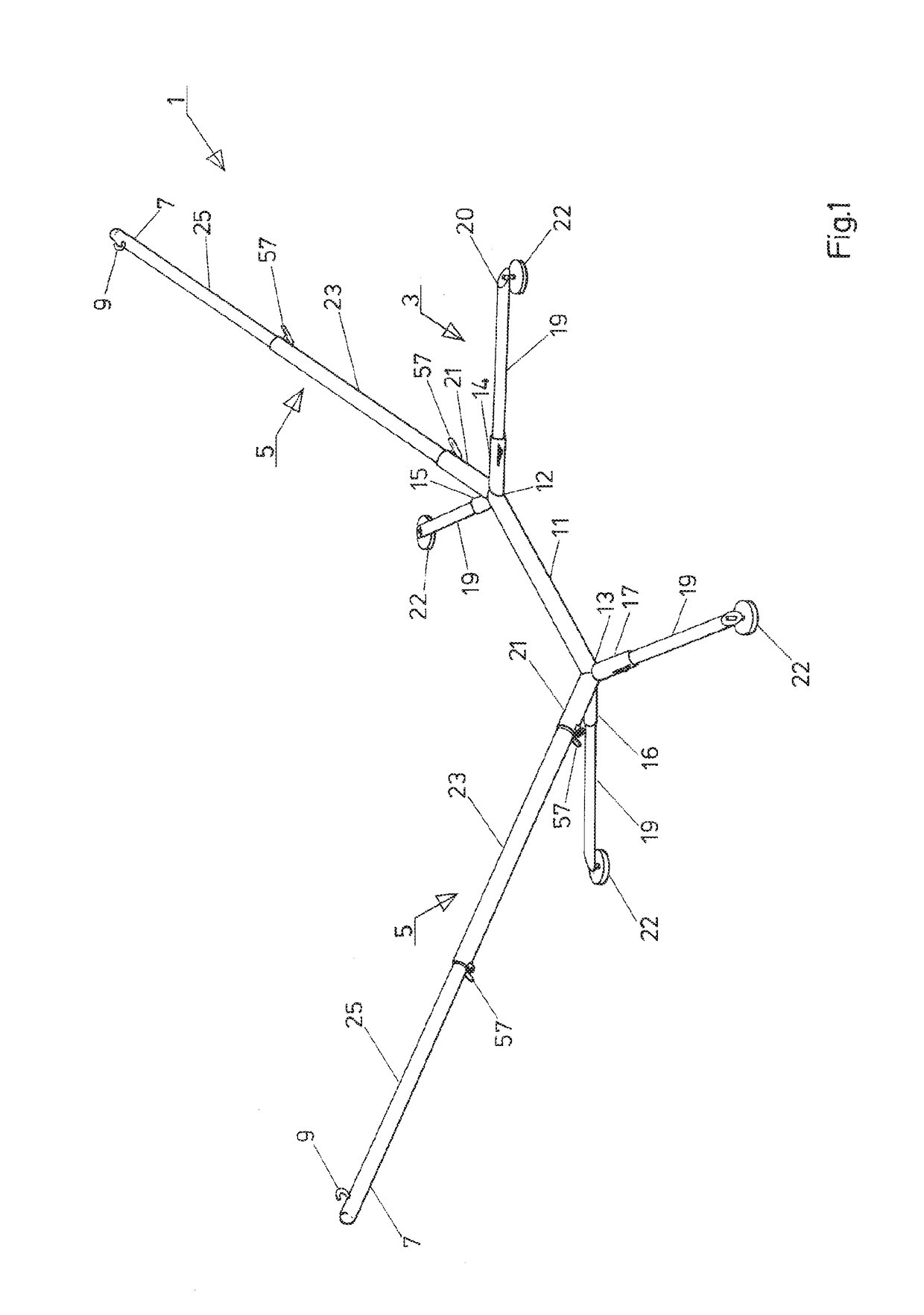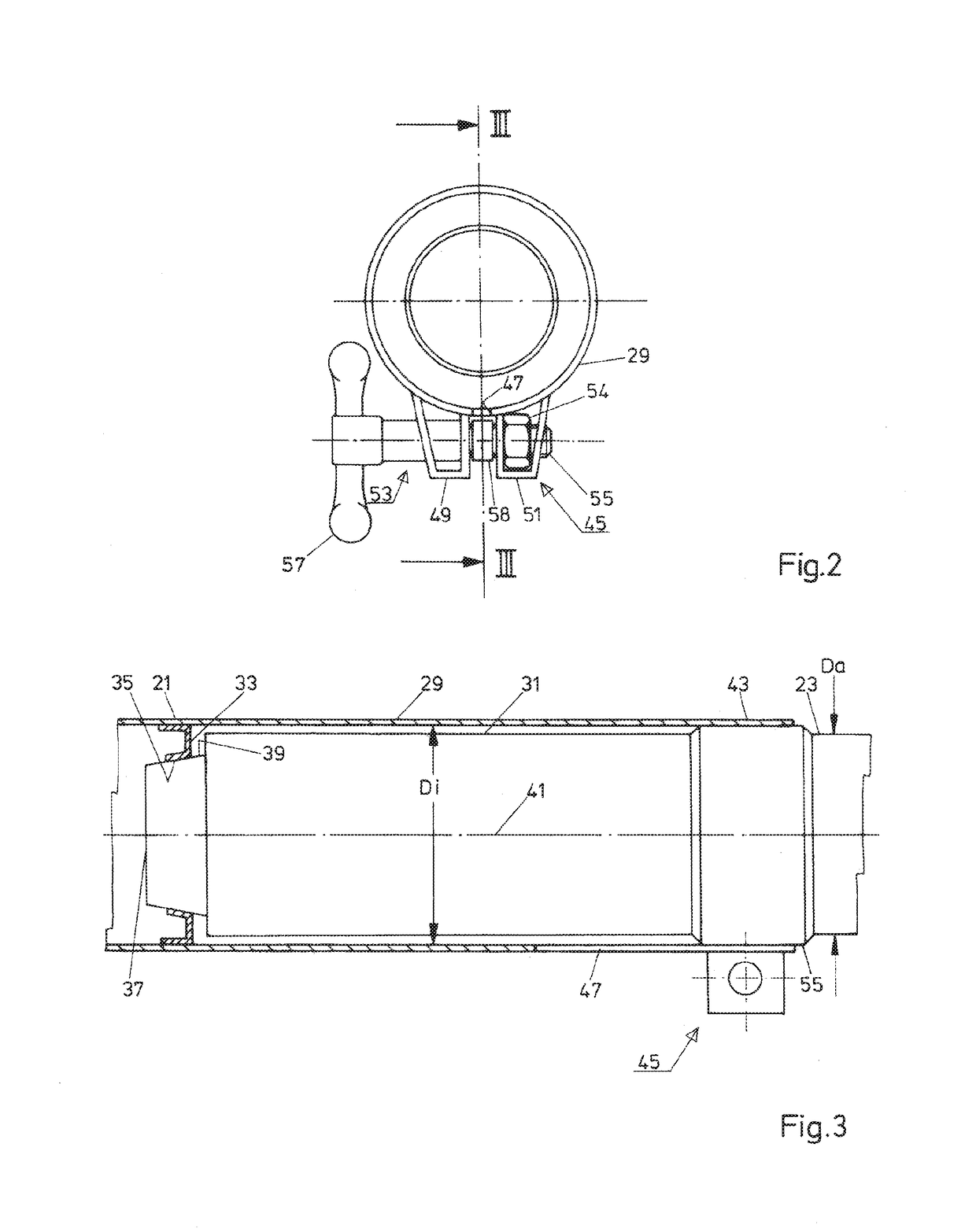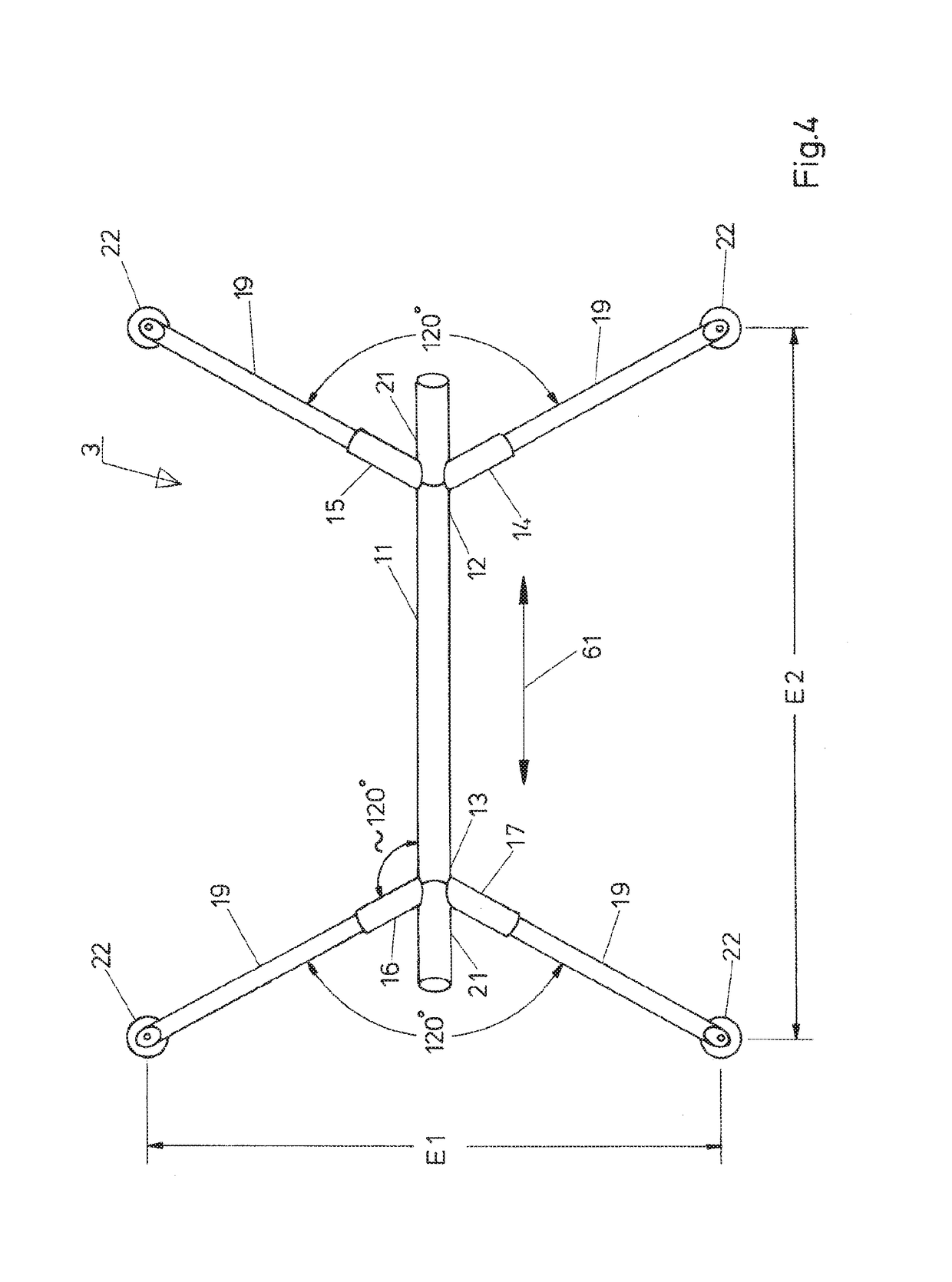Dismountable hammock stand
- Summary
- Abstract
- Description
- Claims
- Application Information
AI Technical Summary
Benefits of technology
Problems solved by technology
Method used
Image
Examples
Embodiment Construction
[0025]FIG. 1 shows an embodiment of a dismountable hammock stand. The stand 1 comprises a base to be placed on a floor, and two bars 5 extending from the base 3, wherein a hook 9 is fixed to an end portion 7 of each bar 5. A hammock, not shown in FIG. 1, can be attached to the hooks. The hooks 9 are located at a height of about 1.5 meters above the floor and at a distance of about 4 meters from each other.
[0026]The base 3 comprises a main tube 11 having a first end 12 and a second end 13, wherein a first tube socket 14 and a second tube socket 15 are mounted on the first end 12 of the main tube 11, and wherein a third tube socket 16 and a fourth tube socket 17 are mounted on the second end 13 of the main tube 11. Four leg tubes 19 are provided, wherein each leg tube 19 is inserted into a respective one of tube sockets 14, 15, 16 and 17 with its first end. Feet 22 are mounted to second ends 20 opposite to the first ends 12 of the leg tubes 19. The feet 22 rest on a floor (not shown i...
PUM
 Login to View More
Login to View More Abstract
Description
Claims
Application Information
 Login to View More
Login to View More - R&D
- Intellectual Property
- Life Sciences
- Materials
- Tech Scout
- Unparalleled Data Quality
- Higher Quality Content
- 60% Fewer Hallucinations
Browse by: Latest US Patents, China's latest patents, Technical Efficacy Thesaurus, Application Domain, Technology Topic, Popular Technical Reports.
© 2025 PatSnap. All rights reserved.Legal|Privacy policy|Modern Slavery Act Transparency Statement|Sitemap|About US| Contact US: help@patsnap.com



